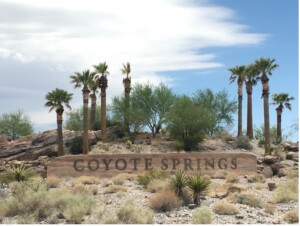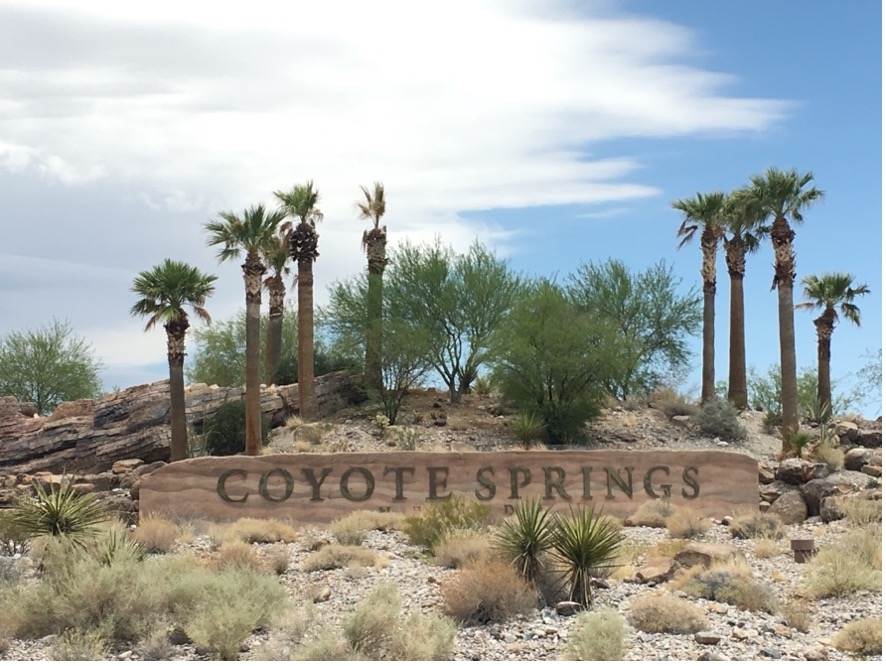We have a special newsletter for you this week focusing on the water developer Vidler, a company making headlines for its western water operations and actively engaging in the Nevada Legislature, the courts, and the regulatory realm. This year marks another flashpoint for the Carson City-based entity. And GBWN is watching every move it makes.

There’s cash flow. And there’s hydrologic flow. There’s speculation and water speculation.
In the arid west, the paradox of flow inherently constrains our lives. The paradox of speculation – taking risks for big gains – impacts more than just financiers.
We need water to survive financially and physiologically. Yet we live in an area where there is not enough water for everyone to taste the fat of the land. And many entities are not interested in sharing or facing reality.
For Vidler, the grasping water developer recently acquired by publicly traded homebuilder DR Horton, cash flow and hydrologic flow cannot be controlled as easily as the company once imagined in Arizona, California, Colorado, Idaho, Nevada, and New Mexico. Aridity constrains profit margins. It also welcomes the specter of heightened uncertainties for investors, communities, and hydrologic systems throughout the West.
Vidler’s Western presence –– especially in places like Nevada’s Lincoln County, Washoe County, Carson City County, Lyon County, and elsewhere –– is a reminder of the contradictory nature of our water law. We are over-using the limited supplies we have and are losing those very supplies thanks to climate change. That harms rights holders, ecosystems, and future generations. But it forces us to ask: What is speculation, really?
Speculation is illegal in many western states’ water laws. In Colorado, the anti-speculation principles are identified as the Vidler Doctrine. It is not a coincidence. A 1970s opinion from the Colorado Supreme Court outlined the dangers of deep-pocketed entities hoarding water and preventing others from putting it to beneficial use. In Nevada, the State Supreme Court articulated an anti-speculation doctrine of its own –– building off the very principles of the aptly named Vidler Doctrine in Colorado.
The rules of the eponymous doctrine are murkier in a drying, warming landscape where the inverse relationship between the value and availability of water makes it understandable why companies with shareholder obligations would want to get in the game. In some cases, Vidler is pushing water law to its limits in its requests to appropriate water. In some cases, Nevada regulators denied Vidler applications or have let them sit for years without action. Nevertheless, officials have approved far more applications than they’ve denied. Other government agencies like the National Park Service, Bureau of Land Management, and the SNWA –– along with NGOs like GBWN and agricultural families –– have protested Vidler’s attempts to acquire water with varying degrees of success. Add the water Vidler purchased with what regulators awarded over the years and you’ll begin to see the value of the portfolio in a place like Nevada.
Entities like Vidler and Water Asset Management have the resources to play the long game. They can afford to buy up old farms, build infrastructure, and play politics for the reward of one-day selling water for handsome profits to thirsty big cities. In 2003, Vidler successfully lobbied Nevada lawmakers to carve out a special partnership with the Lincoln County Water District –– giving Vidler the ability to hold onto water as a quasi-government entity in the region. Vidler has applied for water in basins where there are uncertain sums of water that flow into other regions (Clover Valley, Garden Valley, Pahroc Valley, and Lower White River Flow System to name a few).
Are Vidler’s activities hostile toward the notion of resource availability, water conflict, and public interest protections? Or do the dogmas of putting water to beneficial use solely to make money –– and the machinations companies will undertake to do so –– legitimize the behavior?
Those are questions tackled in a recent long-form report from Grist that helps shine a light on the notion of water speculation and features anecdotes from GBWN. Take some time to read investigative reporter Jake Bittle’s latest piece on Vidler’s operations in Nevada and consider the contextualization in the aridifying lands beyond the 100th Meridian.
It's All in the Name
Vidler Objects to the Realities of AB387
Vidler has a cadre of lobbyists this session who are opposing bills we support. One bill is AB387, which seeks to recognize hydrologic connectivity beyond the boundaries laid out on maps 50 years ago. The bill ensures that senior rights and the public interest remain intact while also avoiding the pitfalls of validifying mitigation schemes when managing connected hydrologic regions. Why would anyone oppose this?
For Vidler, this bill jeopardizes what they thought they had on paper.
Water knows no borders. But in Nevada, we have 256 hydrographic basins that sequester groundwater management into hundreds of distinct little buckets. Those basins, however, are not always islands unto themselves. Many of them experience connectivity with other basins. For a simplified example, a groundwater pumper with junior rights in Basin 1 can harm someone with senior surface water rights in Basin 2 or Basin 3. That’s because ground and surface waters in hydrologic systems are often connected. And in some cases, groundwater moves extensive lengths through multiple basins on the path to a terminus that ends as surface water.
The important thing to remember here is: All appropriations are subject to valid and existing rights. And here’s where things get tricky: The system of priority rights associated with each individual basin does not reflect connectivity. Priority is priority in each individual basin. But what do we do when conflicts occur between folks in differing basins? Nevada water law prohibits junior groundwater pumpers from harming senior surface water rights or senior groundwater rights. But it’s been happening. Led By Assemblyman Howard Watts, stakeholders crafted a very simple fix in AB387 that bolsters existing rights and recognizes connectivity between sources –– which could lead to curtailment. For entities interested in pushing paper water, this was a problem. And, of course, the leading opponents are Vidler and Coyote Springs.
Too Big To Curtail?
In respecting and recognizing connectivity, we grapple with our paper water problem. Regulators handed out too many permits in the latter half of the 20th Century and in the early years of this century. In highlighting connectivity, the bill sets the stage for curtailment in over-allocated basins.
There is a fair and valid question about how curtailment should take place. It must require the best available science to demonstrate how conflict occurs (a provision in the bill). It must guarantee due process and offer opportunities to demonstrate substantial evidence. Processes like these ensure that senior rights and the public interest remain protected.
In AB387’s senate and assembly hearings, we heard hyperbole, bluster, and misleading claims from opponents. But at its core, the fight is about keeping paper water valid. We must ask, are entities like Vidler too big to curtail?
Some believe bills like AB387 are unnecessary. The State Engineer, as the myth goes, can curtail under existing law. We don’t disagree. But ongoing litigation exemplifies the difficulties the State Engineer faces every time he seeks to turn off someone’s pumps. There is a gaping need for clarity. That is AB387.
We sought balance with AB387: Protect water rights holders from conflict, protect the public interest from harm, and guarantee due process protections.
Until we officially recognize that water flows and cash flows don’t always jibe, the resulting over-appropriation and conflict will undermine the law. Think about places like the Humboldt River where the most senior rights holders are not getting their deliveries while junior rights holders get their full allocations.
That’s not legitimate.
Unfortunately, today is the deadline to get the bill out of committee, and AB387 is stuck in a drawer. Why? Many parties weren’t ready to come to grips with reality.
The Supreme Court Will Have a Say
Indeed, ongoing litigation may provide clarity on some of these issues. But we believe that powerful interests should not be able to grease their way into building dependencies on unsustainable quantities of water. However, powerful entities –– just because I disagree with them –– should not be prohibited from acquiring water. But the balance lies in how we respect the resources, respect communities, and respect the limitations of ecosystems. As much as we talk about speculation, we must also worry about system manipulation.
We need a framework where gimmicks and ploys have no place –– where balance prevents killing every plant, draining every spring, and supplanting every community that stands in the way of a deep-pocketed entity.
Inevitably, powerful interests are the poster children of one side in that battle. GBWN is on the other. We have our dogmas too.
We will be back next week with updates on the Colorado River (there is big news) and the endgame of the Nevada legislative session.
Thank you for reading this and be sure to read the whole piece in Grist. And remember: The sand stays, the water goes.
Kyle

